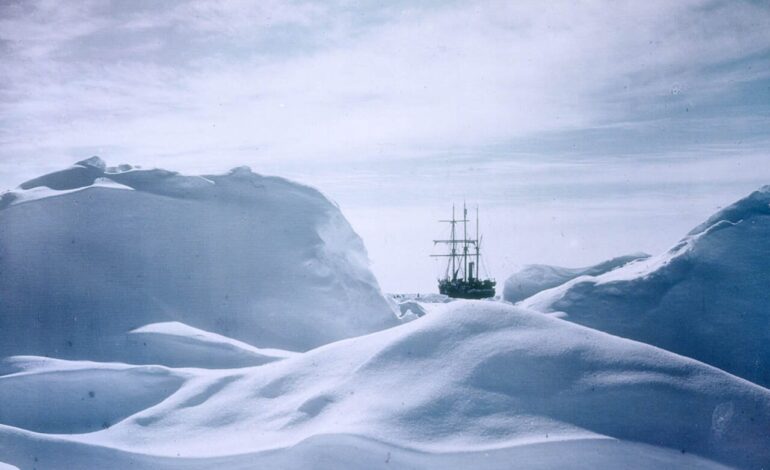New Research Uncovers Structural Flaws in Shackleton’s Endurance

A recent study has revealed that the famed ship Endurance was not as robust as previously thought, challenging long-held beliefs about its construction and the decisions made by British polar explorer Sir Ernest Henry Shackleton. Research conducted by Jukka Tuhkuri, a polar explorer and expert in ice mechanics at Aalto University in Finland, indicates that Shackleton was aware of the ship’s structural weaknesses before embarking on the ill-fated journey in August 1914.
New Insights into an Iconic Expedition
The Imperial Trans-Antarctic Expedition aimed for the first overland crossing of the Antarctic continent. Unfortunately, the Endurance became trapped in pack ice in early 1915 and sank in November. Remarkably, all 28 crew members survived, enduring harsh conditions on the ice before reaching Elephant Island. Shackleton and a small team then sailed approximately 800 miles (1,300 km) to South Georgia Island to secure a rescue, successfully bringing everyone home by September 1916.
Tuhkuri’s findings, published in the journal Polar Record, provide a detailed analysis of the Endurance‘s design flaws. He noted that while the ship was celebrated as the strongest polar vessel of its time, it suffered from multiple structural deficiencies. “Even simple structural analysis shows that the ship was not designed for the compressive pack ice conditions that eventually sank it,” Tuhkuri stated. He emphasized that the ship’s deck beams and frames were weaker than those of other early Antarctic ships, and there were no diagonal beams to reinforce the hull.
Reevaluating Shackleton’s Choices
The study raises questions about why Shackleton chose to set sail on a vessel that was not adequately prepared for the expedition’s challenges. Despite consulting Shackleton’s diaries and correspondence, Tuhkuri could not determine the reasons behind this decision. “He had recommended diagonal beams for another polar ship when visiting a Norwegian shipyard,” Tuhkuri explained, indicating that Shackleton understood the risks associated with ice compressive loads.
The research prompts a critical reflection on whether the Endurance was truly “ill-fated” or if Shackleton made poor choices. Tuhkuri refrains from providing a definitive answer, acknowledging the complexity of the situation. “We can speculate about financial pressures or time constraints, but the truth is we may never know why Shackleton made the choices that he made,” he remarked.
While Tuhkuri’s study does not seek to diminish the remarkable survival story of Shackleton and his crew, it aims to enrich the narrative with factual insights into the Endurance. These findings challenge the romanticized view of the ship as an indomitable force in polar exploration.
This new perspective invites historians and enthusiasts alike to reconsider the legacy of Shackleton and the Endurance, ensuring the story remains relevant and accurately represented over a century after the expedition’s harrowing journey.






